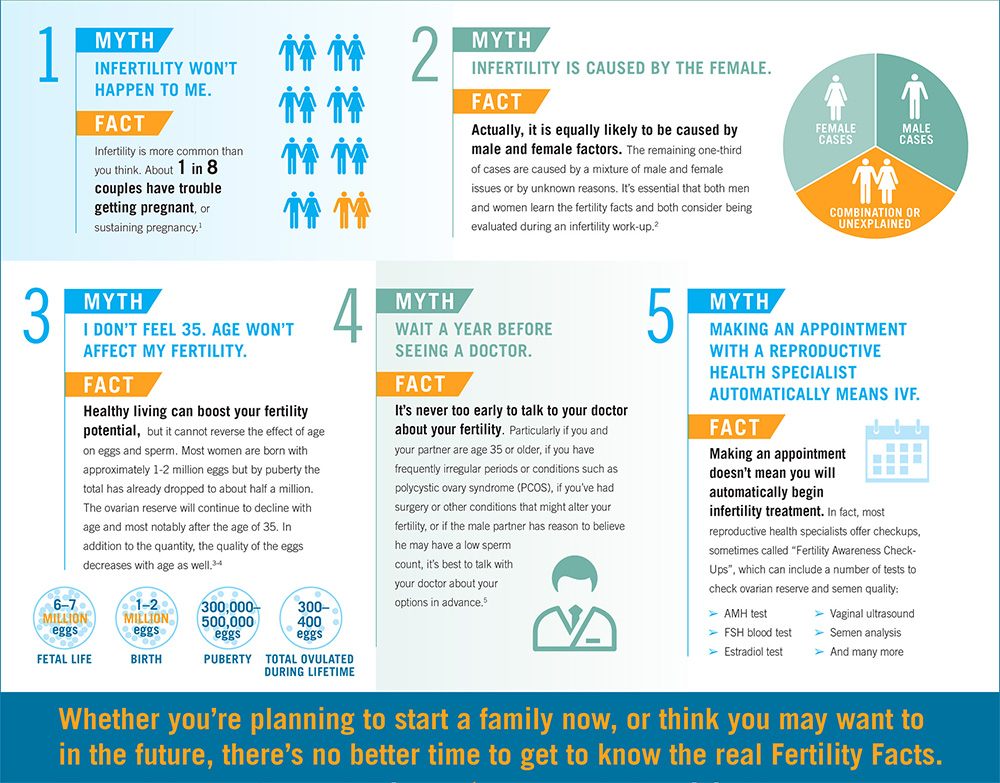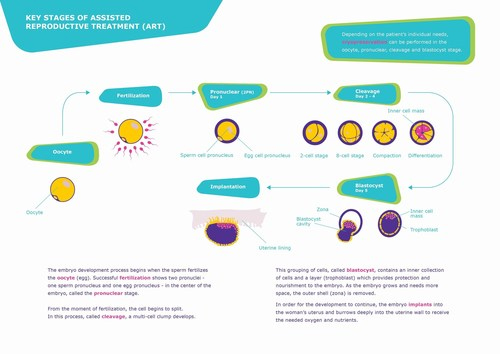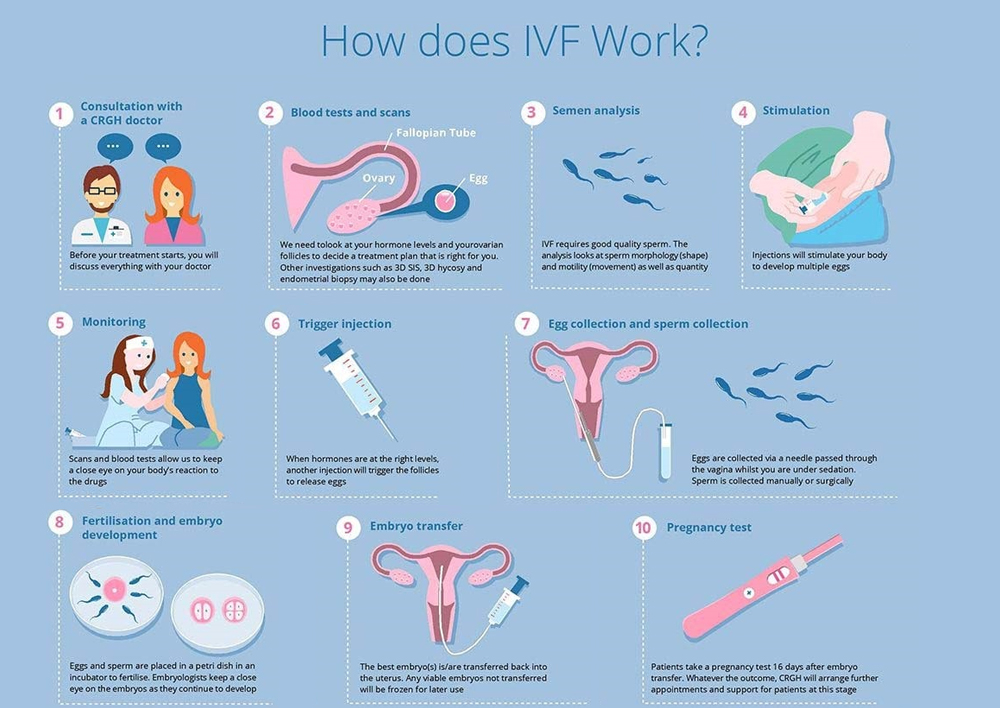IVF
Infertility

In general, infertility is defined as not being able to get pregnant (conceive) after one year (or longer) of unprotected sexual intercourse or due to an impairment of a person’s capacity to reproduce either as an individual or with his/her partner.1
Get The Facts
Main Causes of Infertility In Men and Women
- 9% of the global population of reproductive age is estimated to be infertile
- In developing countries, this increases to one in four couples that suffer from infertility (after five years of attempting for pregnancy or a live birth).
- The most common cause of female infertility is lack of or irregular ovulation. The most common causes of male infertility are problems in the testes that affect how sperm are made or how they function.
- As women age, fertility naturally declines due to normal, age-related changes that occur in the ovaries. Generally, a woman’s fertility begins to drop in her early 30s and declines rapidly after the age of 35.
- Aging decreases a woman’s chances of having a baby in the following ways:
- smaller number of eggs left.
- Her eggs are not as healthy.
- She is more likely to have health conditions that can cause fertility problems.
- She is more likely to have a miscarriage.
- While man’s sperm quality decreases with age after age 40-45, which may make it more difficult for a woman to become pregnant.
It is important to be aware that infertility is not just a woman’s problem
1/3rd of causes are attributed to male factors, 1/3rd to female, and 1/3rd are unexplained causes or a combination of each partner.”5,6
Assisted Reproductive Technology
- Assisted reproductive technology includes all fertility treatments in which both eggs and sperm are handled.
- ART usually involves in vitro fertilization (IVF).
- In IVF, sperm are combined with the egg in a laboratory, and later the embryo is transferred to the uterus. IVF is done for the following causes of infertility:
- Damaged or blocked fallopian tubes that cannot be treated with surgery
- Some male infertility factors
- Severe endometriosis
- Premature ovarian failure
- Unexplained infertility
- They do NOT include treatments in which only sperm are handled (i.e., intrauterine—or artificial—insemination) or procedures in which a woman takes medicine only to stimulate egg production without the intention of having eggs retrieved.
Stages of ART
- As per the patient’s individual needs, cryopreservation can be done in the oocyte, pronuclear, cleavage and blastocyst stage.
- The embryo development process begins when the sperm fertilizes the oocyte (egg). Successful fertilization shows two pronuclei – one sperm pronucleus and one egg pronucleus – in the center of the embryo, called the pronuclear stage.
- From the moment of fertilization, the cell begins to split. In this process, called cleavage, a multi-cell clump develops.
- This grouping of cells, called blastocyst, contains an inner collection of cells and a layer (trophoblast) which provides protection and nourishment to the embryo.
- As the embryo grows and needs more space, the outer shell (zona) is removed.
- In order for the development to continue, the embryo implants into the woman’s uterus and burrows deeply into the uterine wall to receive the needed oxygen and nutrients.
So thanks to current advanced technologies in infertility, ART or reproductive surgery and drug treatment which helps to create the family .
For further detailed information. Please consult your gynecologists or infertility specialist
- https://www.cdc.gov/reproductivehealth/infertility/index.htm Adapted from CDC ;cited on 8th Sep 2019
- Boivin, J. et al. New Debate: International estimates of infertility prevalence and treatment-seeking: potential need and demand for infertility medical care. Human Reproduction. 2007. 22 (6):1506-1512.
- WHO. (2013). Meeting to develop a global consensus on preconception care to reduce maternal and childhood mortality and morbidity: World Health Organization Headquarters, Geneva, 6–7 February 2012: meeting report. pp. 46-49.
- American Society for Reproductive Medicine. 2012. Age and Fertility – A guide for patients [Online] Available at: http://www.reproductivefacts.org
- Agarwal et al. A unique view on male infertility around the globe. Reproductive Biology and Endocrinology. 2015 (13):6 37.
- American Pregnancy Association. 2015. [Online] Available at: https://americanpregnancy.org/infertility/whatisinfertility.html








